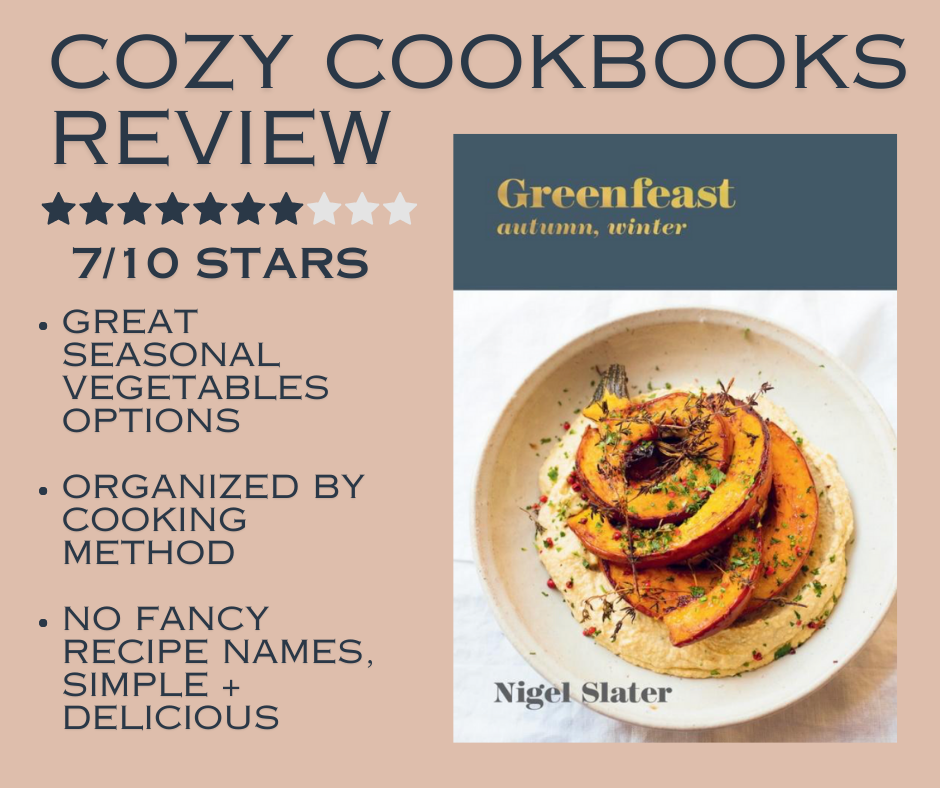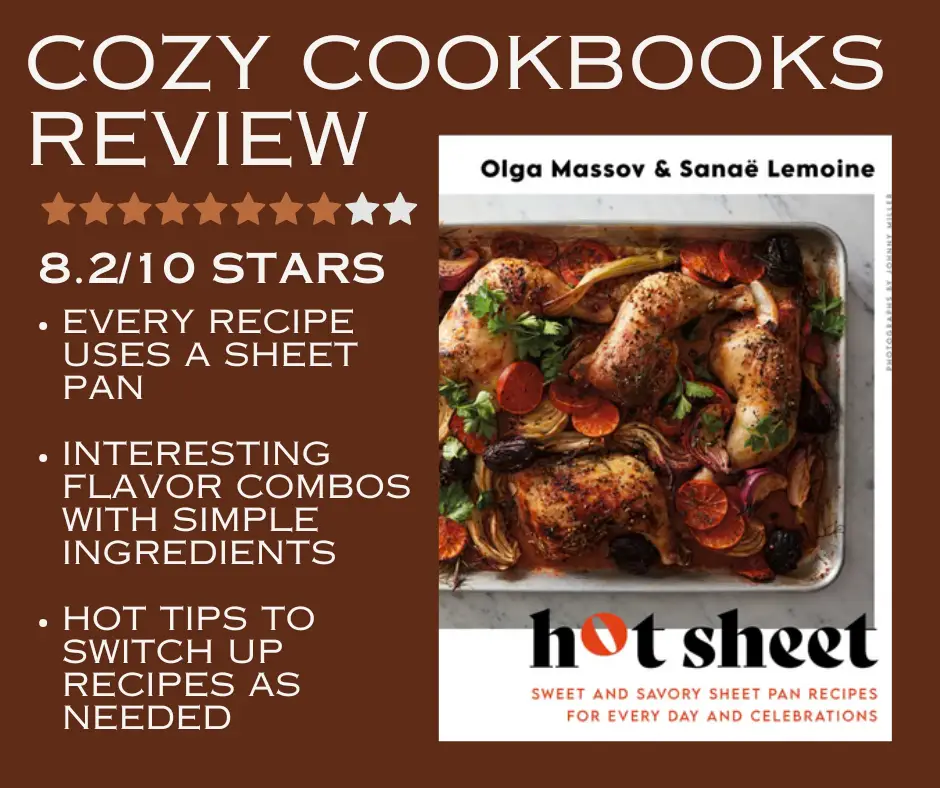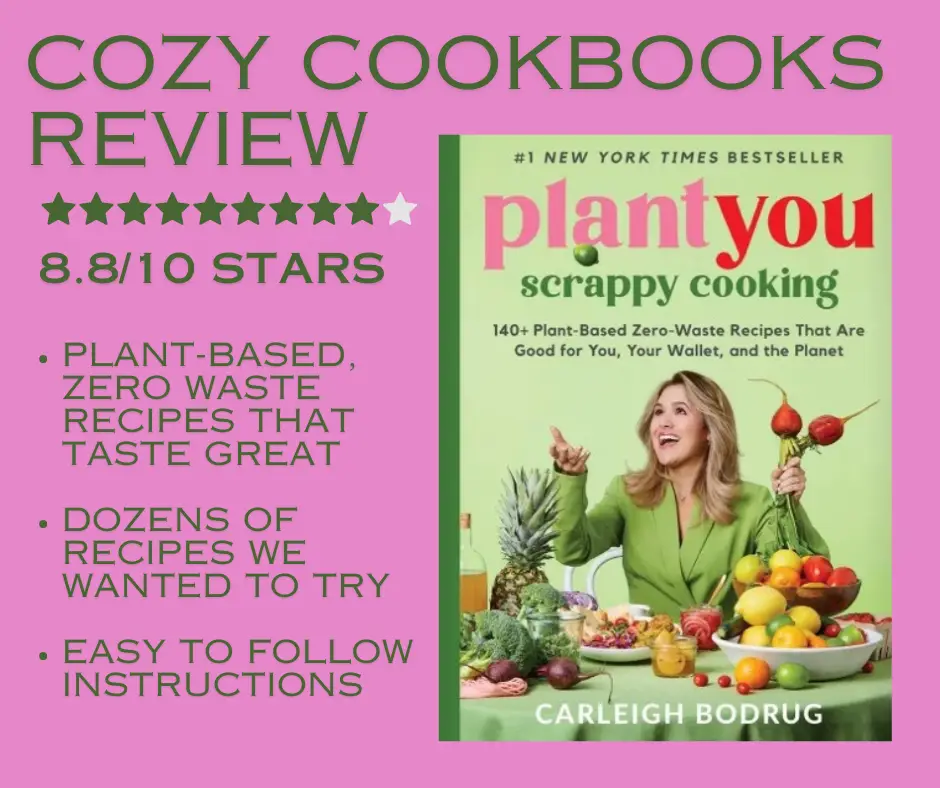The name Greenfeast immediately made me think that this would be a book of leafy green salads, but I was instantly proven wrong. Instead, it’s a little over 100 recipes that are made with produce that is easy to track down in the autumn and winter months. In our ongoing quest to cook vegetables in new and exciting ways, we thought this would be a great third book of the year.
**Remember, the links in this post are often affiliate links. If you purchase anything from those links, it sends us a few pennies to keep this site going but adds zero cost to you. Thanks for supporting The Cozy Chill.
Background of the Book & Author
Greenfeast comes in two volumes. I picked up the Autumn/Winter volume because that is our current season. Getting the Spring/Summer would have just made me wish we were enjoying warmer afternoons and sunsets after 5:30 PM.
Nigel Slater is a food journalist. He has worked for multiple magazines as a food columnist and published many cookbooks. The book is vegetable-focused but also respects the fact that colder temperatures call for comforting foods. The book is filled with stews and dishes that might be called casserole-adjacent.
What Grabbed My Attention
This specific book grabbed my attention because of its seasonality. It’s sometimes difficult to cook with winter produce because you can tire of constant Brussels sprouts and potatoes. I also liked that the actual book is smaller and fits easier on my sometimes chaotic countertop. The recipes are all on one page with a full-sized picture. There are no cheesy names for the recipes, just three main ingredients. Sometimes, my winter brain needs things that are simple and easy to understand.
Overall Cookbook Rating for Greenfeast
Ease of recipes – 7/10
Knowledge of methods & ingredients – 8/10
Fits the theme – 7/10
Taste overall of test recipes – 7/10
Quantity of recipes that generated excitement – 6/10
Overall rating – 7/10
Feedback from a lazy cook who hates a dish pile up and making dinner decisions:
The recipes look simple, but I was surprised they kept me busy for about 30 minutes on each one. There aren’t clear cooking and prep times, so I think that’s likely why I was surprised. The dishes weren’t too bad. We picked things that really only needed a cutting board and one dish.
Feedback from an aspiring cook who wants to impress herself and learn how to do more:
Maybe I picked recipes that were familiar already in some ways, but I didn’t feel like I learned anything huge from this book. My best decision was to combine the first two dishes below into one meal, so it felt like a fancier dinner than our usual meal. When cooking for you, you rarely make multiple items for the dinner plate.
Recipes I Cooked from the Cookbook:
Dish 1 – Brussels Sprouts, Smoked Mozzarella, Dill
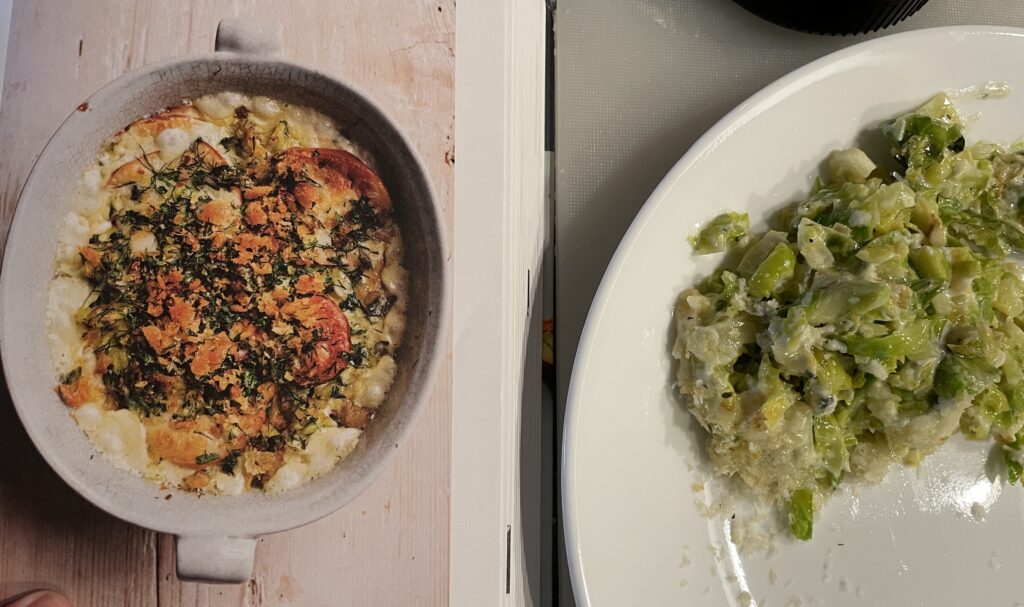
Brussels sprouts are a favorite vegetable in this household. We typically cut them into quarters, add some olive oil, and roast them in the oven. This recipe was unique for us because it had us chop them into smaller bits and cook them in a skillet first. Then, everything was added to a small pan and baked. With the cream, the dish was a lot softer than we usually eat the sprouts. This would definitely be a front-runner for a Thanksgiving meal or potluck. It was creamy, comforting, and cheese. But it definitely didn’t look anything like the picture. Whoops.
Changes made – We used blue cheese instead of smoked mozzarella because we could not find it at either of our usual grocery stores and had some blue cheese we needed to use. It was a great swap. The recipe lists different swaps, and using blue cheese was one of them.
Suggestions for next time – I love blue cheese with Brussels sprouts, so I would keep those the same going forward.
Dish 2 – Orecchiette, Cauliflower, Cheese
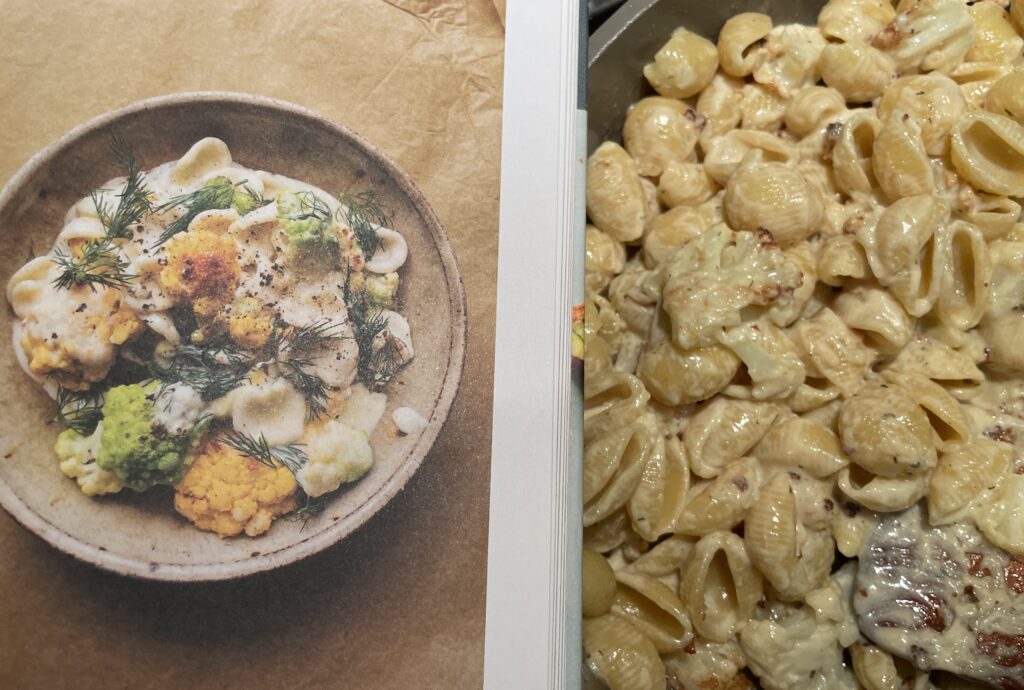
This was my personal favorite. Cauliflower is one of the easiest vegetables to cook with because it absorbs the flavors. This recipe was comforting and tasty. It’s hard for me to say anything bad about a pasta dish. This made a lot of food, so I had it for leftovers the next day as well, and it was just as good.
Changes made – None, we followed the recipe exactly.
Suggestions for next time – I would add some red pepper flakes or a spicy Italian sprinkle from Trader Joe’s.
Dish 3 – Carrots, Rice, Cilantro
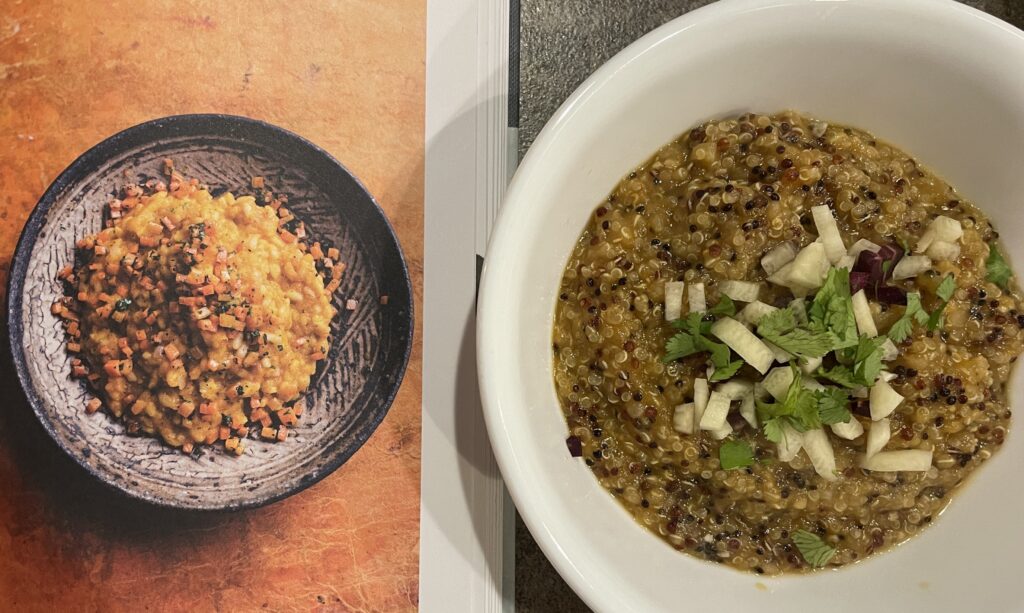
This recipe was not bad. It wasn’t our favorite, but it was easy to throw together and a good way to get a whole bunch of carrots. It’s what I imagine when I think about eating incredibly healthy meals every day like it was missing something that was bad for me. The reason might have been the fact that I thought we had the rice in the pantry, but when I started cooking, I had to swap in quinoa. I know those are not the same, so that might have been why it wasn’t the best.
Changes made – I had to use quinoa instead of rice.
Suggestions for next time – I don’t think I’d make this exact dish again. I would try something else in the book instead.
Lessons Learned
- Check the pantry before assuming I have all the necessary ingredients.
- Remain open to new ways to cook and prepare our favorite vegetables.
- Clearly, I could use some work on my food photography. But these cookbooks have the most beautiful pictures and I can barely get the food to look anything like these photos.
Who Should Buy This Cookbook
This would be a great set to give a friend as a housewarming gift. The recipes are easy to follow, and the books are small—perfect for a compact apartment kitchen. Each recipe has notes on the bottom for swapping out different vegetables or ingredients. Nothing is too complicated, so it’s great for people who are just starting out in their culinary journeys. I didn’t need anything fancy in the kitchen to make these three recipes.
Buy your copy here on Bookshop.org or Amazon. Here is the link to the mate for spring/summer.
Final Thoughts on Greenfeast
This was a great cookbook to have for the farmer’s market. I could walk through the market and find things that were in season. I really liked how the book was organized, with recipes sorted by how they were prepared – on the stove, in the oven, etc. As someone who regularly misreads a recipe or ingredient list, I also loved the notes on each recipe that give you different ideas for preparation. I will try the spring and summer book, but I don’t know if I would add these to my permanent collection.
Next up is Tenderheart. Catch up on the Best of Vegan review if you’re looking for our favorite book of the year so far.

